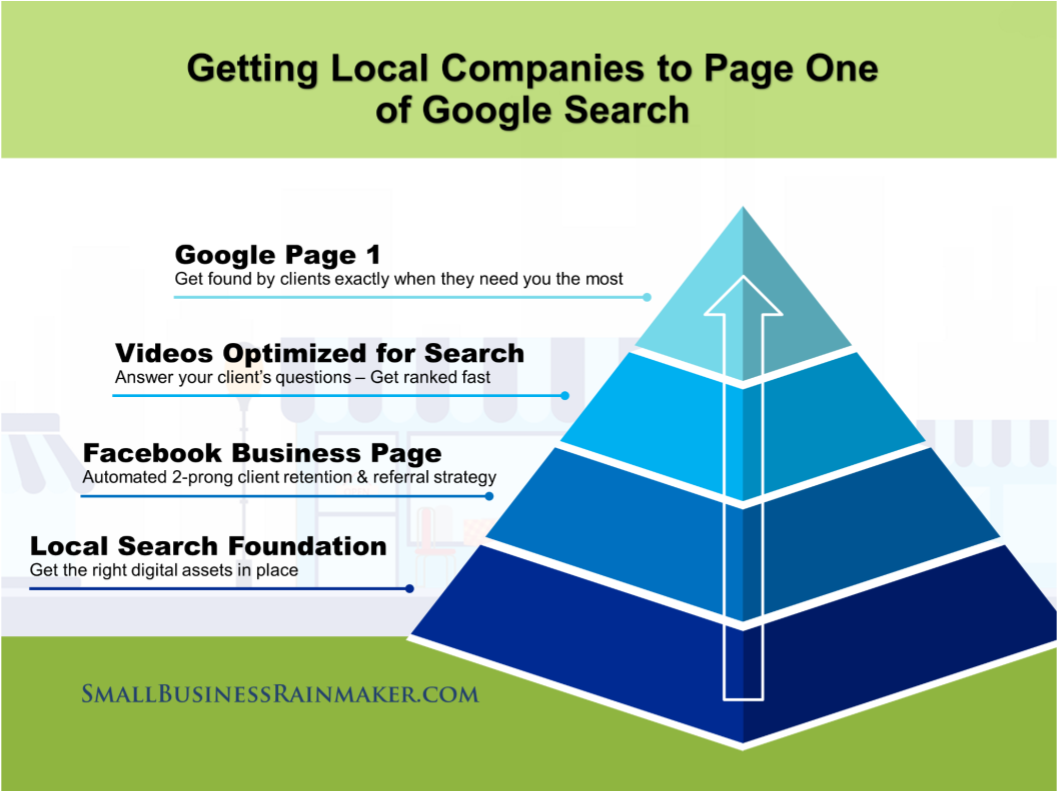Content marketing has emerged as a powerful tool for local businesses that want to establish thought leadership, build brand awareness, engage with their target audience and increase revenue. In the digital age, where consumers are increasingly discerning about the brands they interact with, content marketing offers a cost-effective and compelling way for local businesses to connect with their customers and drive growth.
The benefits of content marketing for local businesses are diverse. It can improve search engine rankings, increase website traffic, boost engagement, build trust, and establish the type of credibility that makes it easy to sell products and services.
In this article, we will review these key benefits:
Key Takeaways – Benefits of Local Content Marketing
- Content marketing is a cost-effective evergreen strategy that can help local businesses establish thought leadership, build brand awareness, engage with target audience, and drive revenue growth.
- Providing relevant and educational content that solves problems and answers questions, and sharing customer success stories and testimonials, helps local businesses attract and retain loyal customers.
- Analytics and metrics are needed to measure the effectiveness of a content marketing strategy. Regular monitoring and analysis of metrics can lead to data-driven decisions that constantly improve strategy.
- Local businesses need to align their content with their brand identity and values, and select the right format and platform to reach their intended audience effectively.

Establishing Thought Leadership and Brand Awareness with Content
By creating content that is relevant and useful to their customers, businesses can position themselves as experts in their industry and gain the trust and loyalty of their audience.
This not only differentiates them from competitors but also encourages customers to share their content with others, thereby increasing their reach and visibility.
Moreover, content marketing allows businesses to showcase their unique brand personality and values, which creates a stronger emotional connection with their audience. And that emotional connection is a prerequisite for purchases.
By consistently publishing high-quality content, businesses can also build a reputation as a reliable source of information and establish themselves as an authority in their field.
Google makes it plain that they favor "people-first content" that demonstrates "first-hand expertise and a depth of knowledge (for example, expertise that comes from having actually used a product or service, or visiting a place.)" This type of content answers people’s questions or helps them find a solution, whether it’s a product or a how-to article.
This not only helps to attract new customers but also improves customer retention as customers are more likely to return to businesses that they trust and respect.
So, how effective is content marketing for local companies?
Cost-Effectiveness of Content Marketing for Local Businesses
An investment in a well-crafted content strategy can yield significant returns for local enterprises. It’s a great small business version of big business “lean manufacturing” that maximizes limited resources.
It also helps local businesses to compete not only with small local competitors, but with larger corporations with massive marketing budgets. In fact, according to a frequently quoted content marketing study by Demand Metric, content marketing costs 62% less than traditional marketing and generates about three times as many leads. This is particularly important for small businesses who may have limited marketing budgets but need to reach their target audience to remain competitive.
Traditional vs Content Marketing
There are several general differences between “traditional marketing” and “content marketing.”
Before I mention them, it should be understood that a cross-channel approach to marketing is always a good strategy which should be bases on ROI. If it delivers results that pay for themselves, by all means, use it! And the more channels you can use, the more stable the business.
The point to this article is that no matter where you are in your business growth, content should be a foundational component of the marketing strategy.
The differences between traditional and content tactics highlight this point. Traditional, for our purposes refers to paid ads in the local press, radio, television, billboards. It also refers to other “outbound” methods such as in-person sales and trade shows.
|
Traditional Marketing |
Content Marketing |
|
Expensive |
Cost-effective, easily adjusted to budget |
|
Interruptive |
Non-intrusive |
|
Limited reach |
Wide reach or very targeted |
|
Limited engagement |
High engagement potential |
|
Short lifespan |
Medium to Long lifespan |
|
Difficult to measure ROI |
Easy to measure, high ROI |
With traditional marketing, companies must keep paying over and over for access to the same limited audience. With content marketing, you pay once for content yet can reap the benefits for years.
Content creation typically has a much lower cost than traditional advertising. For example, a full page ad in a local newspaper or magazine can be several thousand dollars for a single exposure. That same money can buy dozens of pages of relevant website content that can get far more exposure well into the future.
An exhibit at a good trade show can run into the tens of thousands of dollars for a limited exposure to a finite audience. A fraction of that money, spent on content, can deliver exposure to an ongoing audience for many years.
Content Marketing Combined with Contact Management
One benefit of a good content framework is that it delivers leads directly to the company’s contact management system—assuming they have one. New leads can be followed up with via email auto-responders, direct mail, phone calls, or in-person visits.
In this way you “own” the leads. Companies who rely solely on social media marketing such as company pages on various social channels or paid ads, don’t own anything without a contact management system. They have to continue to spend time and/or money to get the customer to buy again. With contact management and follow-up in place, a local company can market to their leads forever or until they opt out.
But content tactics must be combined with fundamental local SEO efforts to deliver a positive ROI. This includes optimized Google Business Profile, optimized local social pages such as Facebook, local directory listings, and locally optimized pages, posts, and videos on the website. A content strategy without local SEO efforts is likely to generate traffic but not many conversions.

Content is also a proven way to establish trust with the target audience.
Building Trust with Your Local Audience
Establishing credibility with potential customers is another essential element of successful content marketing campaigns. By consistently providing high-quality content, businesses build trust and establish themselves as thought leaders in their industry. This trust can lead to increased brand loyalty, repeat customers, and even referrals to new customers.
One way to build trust with your audience is by providing educational content that answers questions and solves problems for your target audience. This can include blog posts, how-to guides, frequently asked questions, videos, product manuals, and tutorials.
A second way to build trust is with customer success stories and testimonials. These provide social proof and hard evidence that your products or services do what you claim. What others have to say about you always carries more weight than anything you can say about yourself.
Finally, engaging with your audience through comments and social media shows that your business values the opinions and feedback of its customers. It demonstrates active engagement and support of customers after the sale. It shows that there are real, caring people behind the product or service, and that you are there for them in the long term.
As businesses establish trust with their audience through content marketing, they can also see improved search engine rankings.
Improve Local Search Engine Rankings with Purposeful Content
Higher search engine rankings lead to increased visibility and exposure for businesses, reaching a wider audience and potentially driving more traffic to their website.
Content marketing can deliver higher search engine rankings by creating high-quality, relevant, and informative content that is optimized for specific keywords and phrases.
The purpose of this is to create helpful people-friendly content that, as we already mentioned, offers a solution to your ideal client’s problems or answers their questions related to your products or services.
The ultimate goal is to show up in the top ten Google search results (page one.) That’s the nature of search engine optimization (SEO.) Stick to the purpose and you’ll make your way to the goal.
One of the keys to a purposeful content strategy is to create “evergreen” content. Evergreen content answers questions or provides solutions to problems that the ideal clients will always have that relate to your products or services.
For example, a label printing company that specializes in product labels has a series of articles that answer common questions about printing product labels. The answers and solutions offered are, of course, related to the label printing service offered by the company.
The evergreen nature of these articles and guides will be helpful to their ideal clients for years to come. Also, the specific nature of the articles also means that the searchers they attract are more likely to be pre-qualified as a good-fit prospect.
Done right, a better search engine ranking leads to more traffic and engagement from the right kind of searcher. With good conversions, it delivers more sales and more long-term customers.
Increased Website Traffic and Engagement
One notable effect of strategic content marketing is the increase in website traffic and engagement.
Hubspot found that business blogs get 55% more website visitors than websites that don’t blog.
The Demand Metric study I mentioned also says that blogs deliver an average of 67% more leads than sites that don’t blog.
Hubspot also found that active business bloggers on average got 13X more ROI than companies that did not blog.
By providing valuable and relevant content to their target audience, businesses can attract more visitors to their website.
Content is not just for national or global companies. Local companies also get similar results.
Ideas for local business content
It helps to think of your client's journey in terms of the traditional "marketing funnel.” Then create content that is helpful to the client through each section of the funnel.
Top of the funnel (people becoming aware of their problem)
- General information or introductory posts
- Local events posts or pages
- Pages listing other local businesses in your industry and/or location
- For multi-location business, pages for each location
Middle of the funnel (people looking for ways to solve their problem or answer a question)
- Tutorials
- Guides
- FAQs
- Checklists
- White papers
- Case studies
- Any of the above in video format
Bottom of funnel (people ready to buy product or service)
- Detailed product pages that answer all questions and lead them to purchase
- Testimonials
- Reviews page
Of course, as this content is created, it needs to be tailored to the company’s target audience, their ideal customer.
Tailoring Content to Your Target Audience
It makes sense that content needs to resonate with your target audience.
This involves identifying the target audience and understanding their needs, interests, and preferences at a deep level. Walk a few miles in their shoes.
Without targeted, tailored content, readers will move on in a matter of seconds.
For instance, a restaurant targeting young professionals may focus on creating content related to healthy eating habits and quick, on-the-go meals. Alternatively, a retail store targeting parents might create content related to child-rearing, parenting tips, and educational toys.
Tailoring content also involves selecting the right format and platform to reach the intended audience. For example, younger audiences may prefer visual content, such as videos or infographics, while older audiences may prefer written content, such as blogs or articles.
Additionally, local businesses must check that their content aligns with their brand identity and values. In other words, don’t create content for its own sake because it’s trending or has a high search volume.
By doing so, they can establish a strong brand reputation and attract loyal customers.
Our last section covers all-important measurements of content marketing efforts.
Measuring Success with Analytics and Metrics
Evaluating the effectiveness of a content marketing strategy can be accomplished with analytics and metrics. Simply put, measurements tell us how our content is performing and whether it’s meeting our goals. It also identifies areas for improvement.
The use of analytics tools such as Google Analytics, Google Search Console, SEMrush, or Moz can help measure key performance indicators (KPIs) such as website traffic, bounce rate, time spent on site, and conversion rates.
These tools can also show which types of content are performing well and resonating with the target audience, allowing us to adjust accordingly.
In addition to measuring website analytics, businesses can also track social media metrics such as engagement rates, reach, and impressions on their primary social pages. This lets businesses see how their content is being received on various social media platforms.
By regularly monitoring and analyzing these metrics, businesses can gain a better understanding of the effectiveness of their content marketing strategy and make data-driven decisions to improve it.
Frequently Asked Questions
Here are a few questions and answers about local content marketing. If you have more, send your questions to me here.
How can local businesses ensure that their content is relevant and engaging to their target audience?
To ensure content is relevant and engaging to their target audience, local businesses should conduct market research to understand their audience’s interests and preferences. This can be as simple as talking to customers and conducting short surveys.
What are some common mistakes that local businesses make when implementing a content marketing strategy?
Common mistakes in implementing a content marketing strategy for local businesses include lack of consistency, not understanding the target audience, poor quality content, failure to measure results, and neglecting fundamental local SEO requirements.
How can local businesses use content marketing to differentiate themselves from their competitors?
As the competition among local businesses intensifies, content marketing can be a valuable tool to differentiate oneself. By creating unique and valuable content, businesses can establish their authority, engage with customers, and foster brand loyalty. Although “content is king” might seem like a tired adage, businesses that prioritize content marketing are shown to have a greater chance of success in today’s digital landscape.
What are some effective ways to distribute and promote content to reach a wider audience?
Effective distribution and promotion of content for wider audience reach can be achieved through social media, email marketing, SEO optimization, guest blogging, and influencer outreach. These methods increase visibility, engagement, and brand awareness, driving traffic and leads.
How do local businesses determine which content metrics to track and analyze to measure the success of their content marketing efforts?
Local businesses can measure the success of their content marketing efforts by tracking metrics that relate to their customer journey. This includes statistics such as website traffic, social media engagement, lead generation, conversion rates, and revenue. These metrics provide valuable insights into the effectiveness of their content strategy and help identify areas for improvement.
Conclusion – Benefits of Content Marketing for Local Business
Content marketing has become an essential tool for local businesses looking to establish themselves as thought leaders in their industry. It’s not enough to have a static website and perhaps a yellow page ad. By creating and sharing valuable content with their target audience, businesses can build brand awareness and establish trust with their customers. It’s a cost-effective approach that allows businesses to reach a wider audience while engaging at a deeper level with their existing customers.
By creating high-quality, relevant content and sharing it with their target audience, businesses can improve their search engine rankings, increase website traffic, and build trust with their customers. As the saying goes, ’Content is king,’and businesses that invest in content marketing are sure to see a return on their investment.
If you’d like some help in developing your content strategy, or simply need an extra pair of hands in creating relevant content, reach out to me here. Answer a few quick questions about your current situation and then we’ll talk about how we might collaborate. No obligation.











Leave a comment